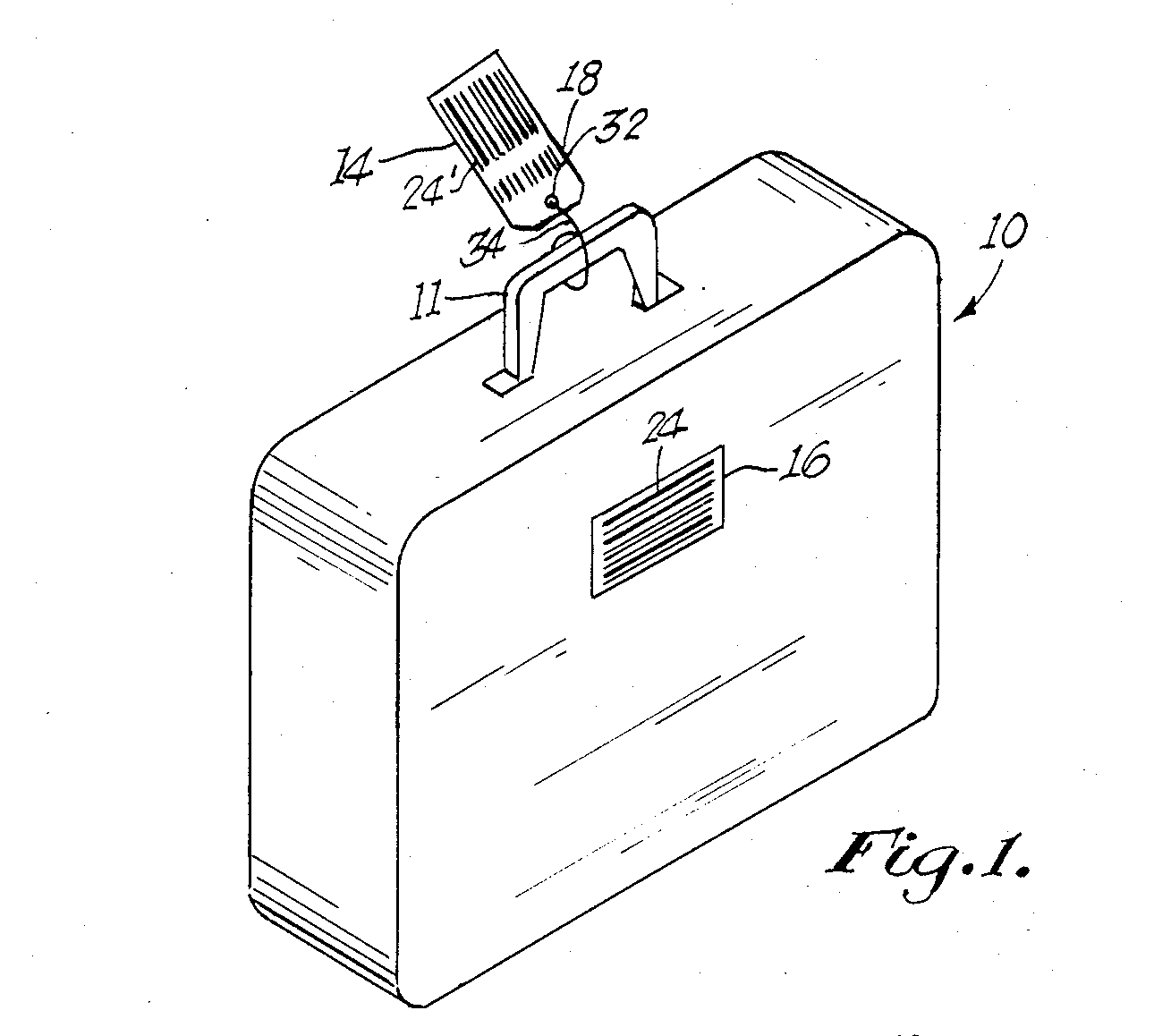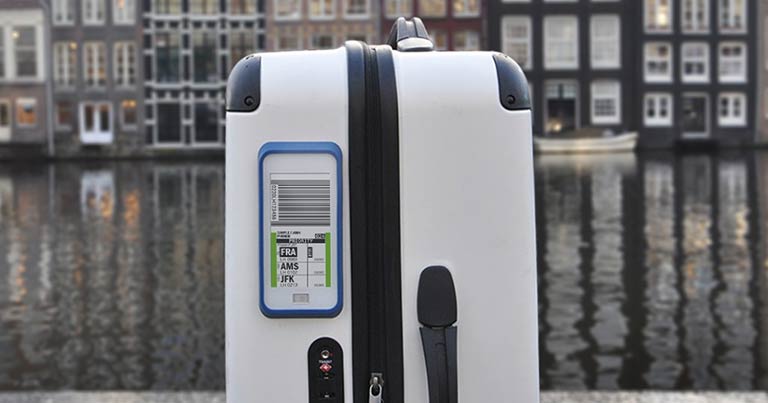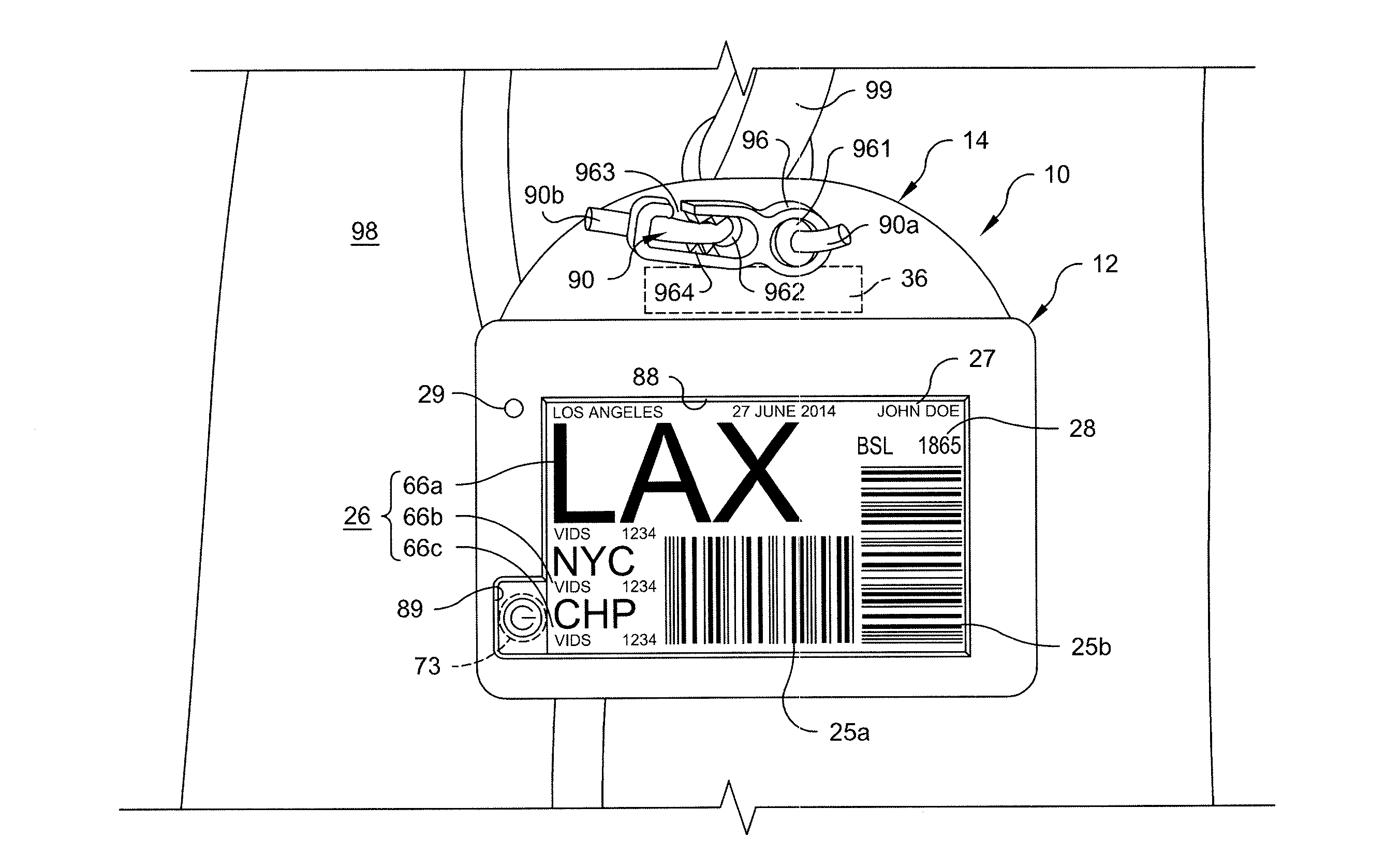Bag Tag

Current bag tag system contributes significantly to the amount of time passengers wait in line at the airport.
︎︎︎ Related entries:
Luggage
Full Body Scanner
Passport
Safety
︎ Random Entry
Tags: systems design, security,
sorting, waiting time, technology
Luggage
Full Body Scanner
Passport
Safety
︎ Random Entry
Tags: systems design, security,
sorting, waiting time, technology
Design Decisions
Baggage handling systems commonly use reinforced paper baggage tags to know where a passenger’s luggage is in the airport, and to determine its intended destination. Using barcodes or RFID chips, these tags identify the luggage with its owner, the flights, and final destination, and even the class of service to indicate priority. This helps airports and carriers identify and trace a specific bag that has gone astray, and help the passengers prove the identity of their bags among other similar bags.
After the bombing of Air India plane in 1985, the airline industry developed a standardized baggage tags system as a security measure and required that bags were matched with their passengers before being loaded onto the plane. This was developed to ensure that terrorists do not check their bags with explosive material onto a flight without actually boarding it themselves [1].


Patent for a baggage tag system from 1987, designed and filed soon after the 1985 bombing
Effects on Passengers
A major consequence of the baggage tag system as it exists today is that it contributes significantly to the amount of time passengers wait in line at the airport. In anticipation of this waiting time, people develop a variety of strategies.
One such tactic is using carry-on bags rather than checked luggage, so that there is no need to wait in line to check and tag a bag. Another tactic is to arrive several hours in advance of flight time.
What-Ifs
What if there was no need to wait in long lines to check a bag?
Similarly to the concept of mobile check-in for passengers, the luggage could be electronically checked-in long before even leaving the home or the hotel. Companies such as BAGTAG, and ViewTag have been pioneering in this sector. Instead of attaching a paper tag, these designs attach a small electronic screen on the luggage that can display the barcode information, and be reused and updated for any subsequent flights [2, 3].

BAGTAG attached on a luggage, which can be reused and updated for any upcoming flights.
What if bags were tracked similarly to package delivery tracking?
Korean Air has created an app where notifications are sent to the passengers’ phone that informs them when their bag is loaded onto the airplane. The app provides a specific barcode to match to one’s bag so there is little chance of a mix-up when claiming a bag [4].
What if bags are tagged for sanitation?
Bags are in contact with multiple hands and surfaces which makes them susceptible for contamination. Airlines are considering adding a sanitation step when bags are dropped off at the check-in counter. The bags would be sanitized under UV lights and tagged for sanitation before they go through the security process and loaded onto the plane [5].

 Patent filing for ViewTag, a smart programmable
electronic bag tag (2016)
Patent filing for ViewTag, a smart programmable
electronic bag tag (2016)- Adey, Peter. 2003. “Secured and Sorted Mobilities: Examples from the Airport.” Surveillance & Society 1 (4).
-
“BAGTAG.” BAGTAG. Accessed September 31, 2019.
-
“Lufthansa Group Rolls out Electronic Bag Tags with BAGTAG Partnership.” Future Travel Experience, January 9, 2018.
-
Loh, Chris. “Korean Air Will Now Alert You If Your Baggage Made The Flight.” Simple Flying, June 2, 2020.
- Dreimane, Baiba. “The Rise of Sanitised Travel: Expect Your Bags to Be ‘Sanitagged.’” SimpliFlying, May 12, 2020.